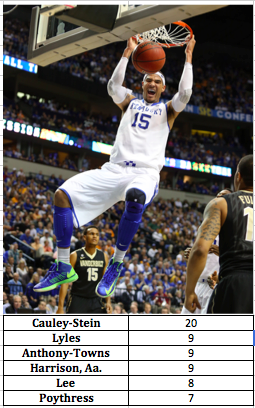Freeze Frame: Georgia’s Inability to Avoid Bad Twos
Posted by Brian Joyce on November 15th, 2016Since Mark Fox’s arrival in Athens seven years ago, Georgia‘s calling card has not been made on the offensive end of the floor. Last season, the Bulldogs didn’t take care of the basketball (19.2% TO rate), weren’t particularly accurate from beyond the arc (36.8% 3FG), and weren’t the strongest offensive rebounding team (32.4% offensive rebounding rate) either. The most alarming statistic, though, was a dreadful 44.8 percent two-point conversion rate, a mark that ranked a horrendous 316th nationally. If Georgia is going to get back to the the NCAA Tournament like it did under Fox in 2015 and 2011, it will have to score more efficiently in large part by avoiding bad two-point jump shots.

Georgia’s Mark Fox would love to see the Bulldogs attack the rim. (The Athens Banner-Herald)
Charles Mann is no longer in a Georgia uniform to get easy points at the free throw line, drawing 6.8 fouls per 40 minutes and scoring 43 percent of his points at the charity stripe. By comparison, backcourt mate J.J. Frazier, the Bulldogs’ primary ball-handler, scores just 27 percent of his points from the line. Where Mann’s game relied on attacking the hoop, Frazier is far more reliant on jumpers. If Georgia’s first couple of games this year are any indication, Fox hasn’t quite broken his point guard from the tendency to settle for too many mid-range jumpers. According to hoop-math.com, Georgia took 41.1 percent of its shots from mid-range last season (27.3% at the rim; 31.6% from three). To frame that number appropriately, the Bulldogs’ percentage of shots that came as two-point jumpers ranked ninth nationally. Conventional basketball wisdom says that long two-point jump shots are terribly inefficient, yet they are clearly a big part of Frazier’s offensive game. Read the rest of this entry »










































